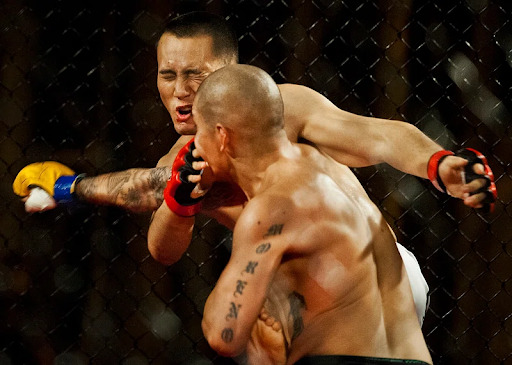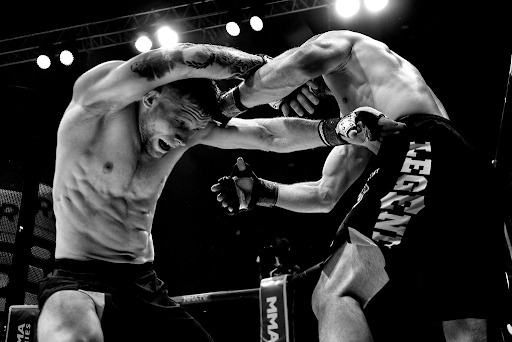Mixed martial arts (MMA) has always been a sport that rewards innovation, but some fighters take unpredictability to an entirely new level. In MMA, “unorthodox” refers to a style that defies traditional techniques, confuses opponents, and breaks conventional fighting norms. These fighters often incorporate flashy, unexpected movements, unconventional angles, and unusual striking or grappling strategies.
The definition of unorthodox isn’t limited to just striking or movement—it can also include fighters who display unusual defensive techniques, odd footwork, or a unique psychological approach to fights. Some utilize elements from traditional martial arts that are rarely seen in MMA, while others seem to invent moves on the spot.
Fans of unorthodox fighters appreciate the creativity and excitement they bring to the octagon, making their fights must-watch events. Just as in gambling, where risk-takers often reap the biggest rewards, unorthodox fighters can turn a fight on its head in an instant. For those interested in taking chances in another arena, a review of gambling sites with an accessible minimum deposit can provide insights into high-risk, high-reward scenarios similar to those seen in the world of unpredictable fighters.

Fighters who changed the game
Throughout MMA history, a select few fighters have truly redefined what it means to be unorthodox. Their styles not only made them fan favorites but also forced opponents and coaches to rethink conventional strategies.
Genki Sudo
A true pioneer of unpredictability, Japanese fighter Genki Sudo was as much an entertainer as he was a martial artist. His unorthodox footwork, theatrical taunts, and seamless blend of multiple disciplines made him one of the most mesmerizing fighters of his era. He often switched stances, utilized spinning attacks, and incorporated capoeira-like movements into his fights. Sudo’s philosophy—”We Are All One”—was reflected in his approach to fighting, which combined elements of striking, grappling, and pure showmanship. Despite his wild style, he was an extremely skilled submission artist, proving that his flashiness wasn’t just for show.
Stephen “Wonderboy” Thompson
Unlike many MMA fighters who come from a background in wrestling or Brazilian jiu-jitsu, Stephen Thompson is a traditional karate stylist who brought his striking acumen to the UFC. His side-on stance, lightning-fast kicks, and ability to manage distance make him one of the most unique strikers in modern MMA. While many fighters rely on straightforward aggression, Thompson’s approach is based on precision, counter-striking, and making opponents miss. His unusual movement and evasive techniques have baffled elite competitors, earning him victories over some of the best welterweights in the world.
Michel Pereira
Brazil’s Michel Pereira is perhaps the most visually spectacular fighter in modern MMA. Known for his gravity-defying moves, Pereira employs techniques rarely seen in professional competition, such as jumping off the cage, flipping mid-fight, and launching unpredictable spinning attacks. His fights often look more like a Cirque du Soleil performance than a standard MMA bout. While critics argue that his flamboyant style can drain his energy, Pereira has proven that his athleticism and unpredictability can have devastating effects when properly controlled.
The pros and cons of an unpredictable fighting style
Using an unorthodox style in MMA has both advantages and disadvantages. On one hand, it can confuse opponents, make counterattacks difficult, and allow for creative openings. On the other, it can be high-risk, energy-consuming, and sometimes difficult to maintain over five rounds.
Pros:
- Element of surprise: Opponents struggle to prepare for fighters who don’t follow traditional patterns.
- Exciting for fans: Unorthodox fighters often gain large followings due to their entertaining styles.
- Versatility: Fighters who mix different disciplines creatively can be dangerous in multiple areas of the fight.
- Psychological advantage: Opponents may hesitate or overthink their attacks, giving the unorthodox fighter an edge.
Cons:
- Higher risk of mistakes: Wild, flashy techniques can lead to openings that experienced opponents can exploit.
- Energy drain: High-movement styles require excellent conditioning to maintain over a full fight.
- Lack of consistency: Against disciplined, well-prepared fighters, unorthodox techniques can sometimes be neutralized.
Despite the risks, the element of unpredictability remains an invaluable asset for those who can balance creativity with strategic discipline.

Can unorthodox techniques be trained, or are they natural?
One of the biggest debates in MMA is whether a fighter can be trained to be unorthodox or if it’s something innate. While foundational skills can be taught, the fluidity and creativity seen in fighters like Genki Sudo or Michel Pereira often seem to be part of their natural instincts rather than something that can be drilled into an athlete.
However, some aspects of an unorthodox approach can be trained:
- Footwork drills: Fighters can develop unpredictable movement patterns through intensive footwork training.
- Creativity in sparring: Encouraging experimentation in sparring sessions allows fighters to become comfortable with unconventional techniques.
- Martial arts cross-training: Bringing elements from karate, capoeira, taekwondo, or even dance can enhance a fighter’s unpredictability.
That said, much of what makes a fighter truly unorthodox lies in their mindset. Fighters who are naturally comfortable breaking the rules of conventional fighting often have an innate ability to adapt and innovate in real-time.
Will future fighters continue to innovate?
MMA has always been a sport of evolution. What was once considered unorthodox—such as spinning back kicks or jumping knees—is now commonly used at the highest levels. As fighters continue to push the boundaries of technique, we can expect even more innovation in the future.
One trend to watch is the influence of new training methods. With advancements in sports science, biomechanics, and martial arts cross-training, fighters will likely become even more unpredictable. Additionally, the rise of social media and digital content means that unconventional techniques can spread quickly, allowing fighters from all over the world to incorporate fresh ideas into their game.
Ultimately, while traditional fundamentals will always be essential, the sport’s most exciting fighters are those willing to experiment and redefine what is possible inside the cage. Just as in the world of gambling—where taking risks can sometimes lead to the biggest rewards—fighters who embrace the unorthodox can create moments of brilliance that change the sport forever.

